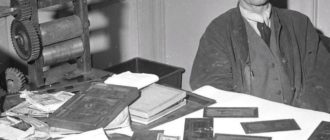
The Royal Victorian Order is a regalia for those who have distinguished themselves before the monarchy
The Royal Victorian Order is one of the minor orders of chivalry in Great Britain. The award does not fit into the traditions of the country’s award system – the Royal Victorian Order is awarded to gentlemen and ladies by personal order of the monarch. The Knights’ Union was founded at a time when, according to British law, decisions on awards were made exclusively by the council of ministers, and the king or queen were deprived of the right to nominate themselves.

Main characteristics:
Author unknown.
Country: Great Britain.
Date of establishment: April 21, 1896.
Number of degrees: 5.
Size of the Knight’s Grand Cross: 78 mm x 78 mm.
Knight Commander’s Cross: 73 mm x 73 mm.
Commander’s cross size: 51 mm x 51 mm.
Lieutenant’s Cross: 44 mm x 44 mm.
Size of the Order Member’s Cross: 41 mm x 41 mm.
Material of the 1st degree order badge: Gold, silver, enamel. Material of the order badge 2-5 degrees: Silver, enamel.

History of the establishment of the Royal Victorian Order
The Royal Victorian Order was founded by Queen Victoria in the 19th century, when the traditions of presenting awards in the British kingdom were strictly observed. Today the practice has changed, but then the sovereign could not recognize persons who had distinguished themselves in the service of the monarchy.
The ruler established the Royal Victorian Order as a dynastic award, which she could dispose of at her discretion. Victoria decided to break tradition a year before her Diamond Jubilee, which is celebrated in Britain on the 60th anniversary of the coronation of the monarch. By that time, the queen’s services to the country were recognized as so significant that none of the state dignitaries even thought of objecting.

The Victorian era was the heyday of Great Britain. The Queen did not interfere in state affairs and carried out her duties solely within the constraints of British law. Victoria was immensely respected for her calm character, balanced and thoughtful decisions, conservatism and lack of craving for luxury. During her reign, she founded an entire dynasty of European monarchs and received the nickname “grandmother of Europe.”

Degrees and insignia of the Royal Victorian Order
The Knights’ Union was founded a year before the anniversary so that the queen could draw up a list of the first knights. The number of members of the order was not limited – any British citizen or foreigner could receive it for services to the monarchy. The official day of the organization was set on June 20, when the country celebrated the anniversary of the Queen’s accession to the throne.
In the hierarchy of the knightly order, the highest rank was occupied by the ruling sovereign, and the rank below was the position of Grand Master. Lord Chamberlain became Chancellor – the heirs to the title still hold high positions today. In addition to treasurer and registrar, the order has the positions of chaplain and genealogist.

There are five degrees in the order:
1 tbsp. – Knight (Dame) Grand Cross.
2 tbsp. — Knight (lady)-Commander;
3 tbsp. — Commander;
4 tbsp. — Lieutenant;
5 tbsp. – Ordinary member of the order.








